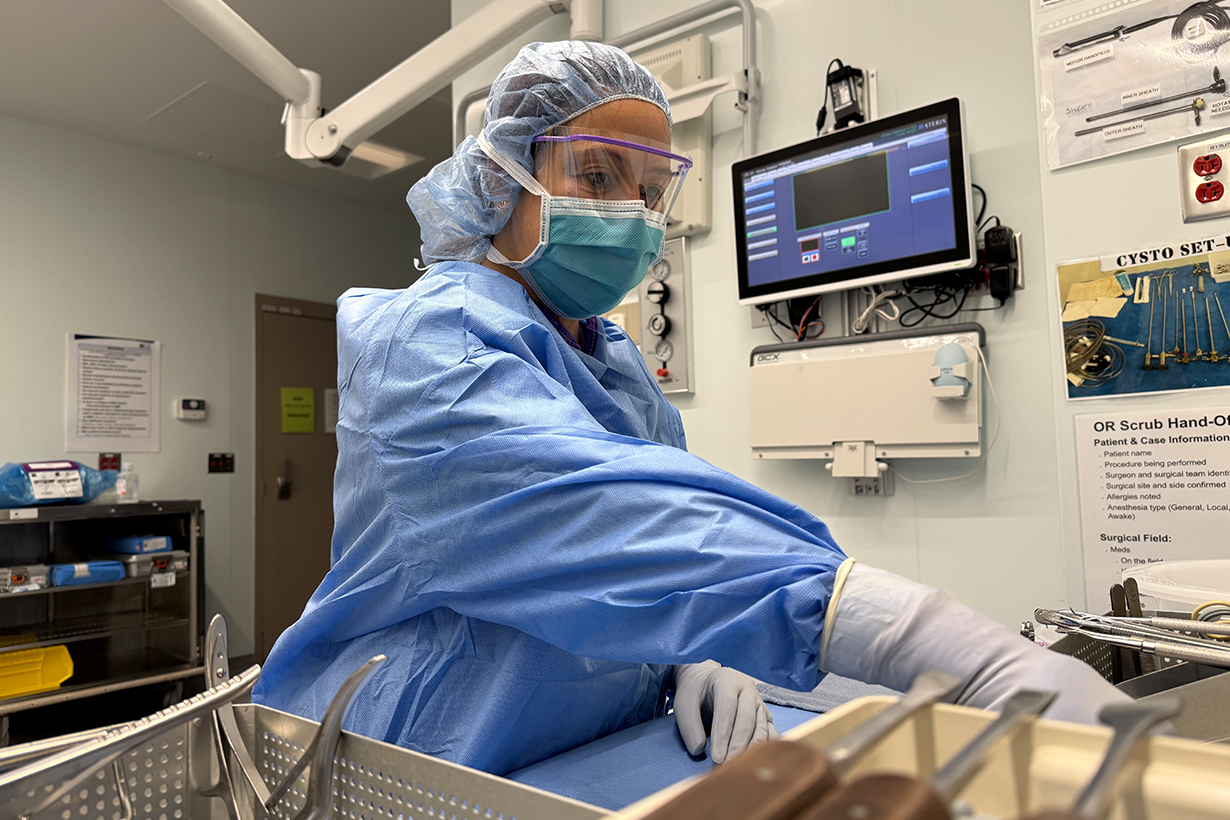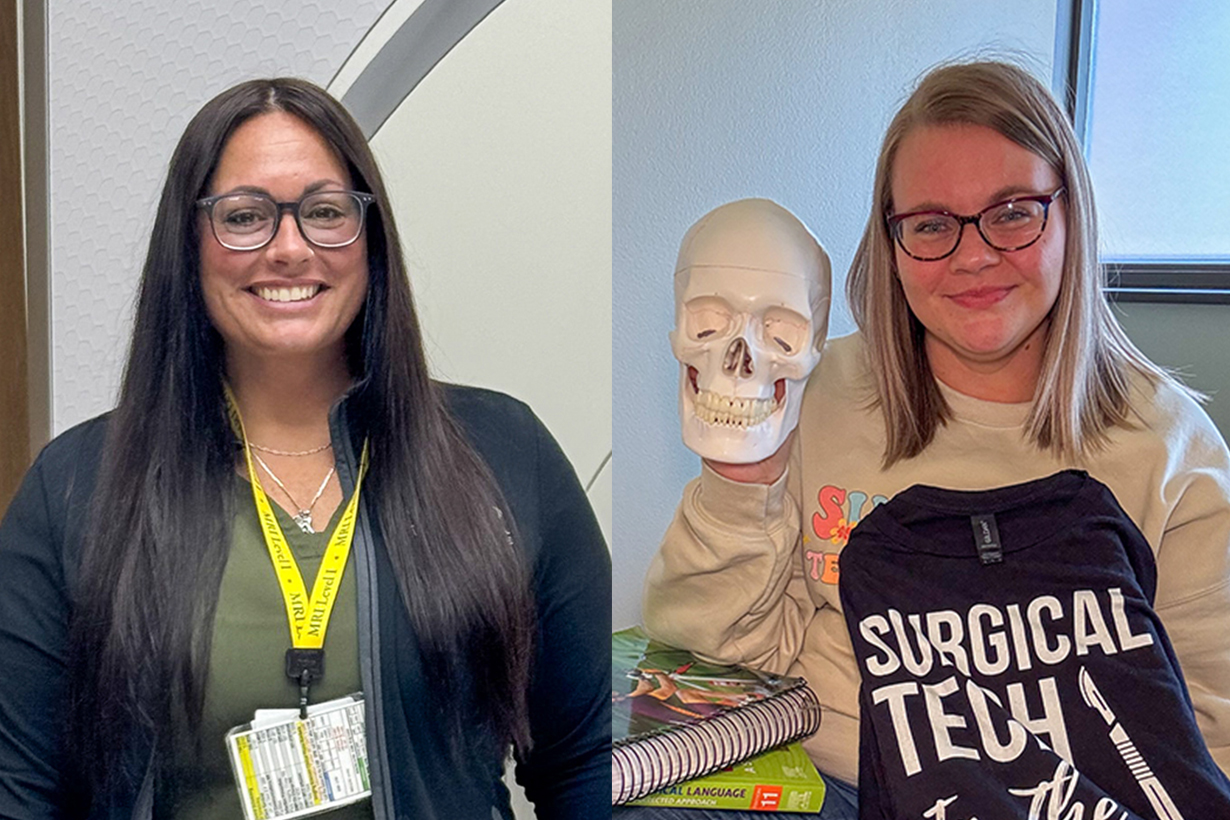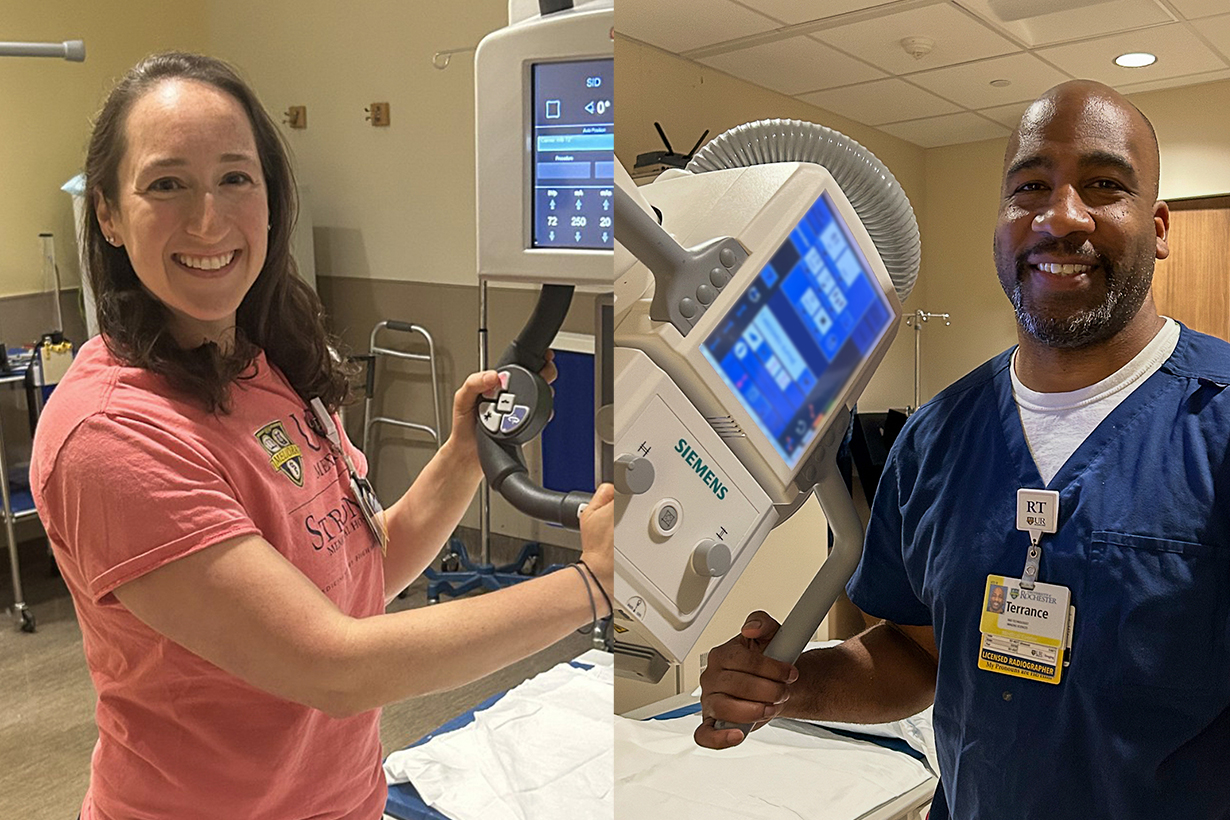The University of Rochester celebrates our incredible employees who make us a better place to work, grow, and serve. In this series, get to know some of the many individuals who turn our mission into action each day—one story at a time.
Where science and compassion intersect—Meet members of our radiologic technologist team
Terrance Cooper
Imaging Sciences/General X-ray
Radiologic Technologist II
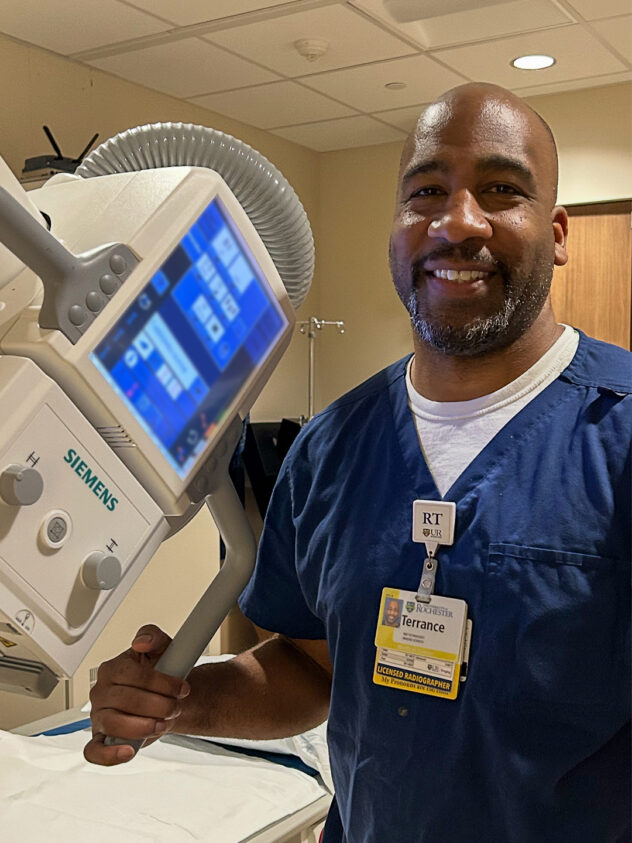
Can you describe what a typical day is like for you as a radiologic technologist (rad tech)?
A typical day as a rad tech consists of imaging inpatients and ED (emergency department) patients, and bringing portable X-rays to patients on floors for the majority of the hospital, including the cancer center, pediatric hospital, and psych patients. I also go to the OR (operating room) for surgery cases and assist the surgeons by using a C-arm, which can take still X-ray images or a series of live images via fluoroscopy, which can produce a real-time X-ray movie.
How did you get started as a rad tech and what skills are needed?
I got started as a rad tech after being referred and encouraged by a good friend of mine. He is a rad tech and a former Strong Hospital employee who is currently a traveling X-ray tech. I got laid off in 2018 and was in between jobs when my friend mentioned he thought I would be a good rad tech. He said the only drawback is that I would have to go back to school to get an X-ray degree, and that’s exactly what I did. I was a little nervous about going back to school as I graduated from college with my bachelor’s degree over 20 years ago. However, I’ve always enjoyed learning new things, and I’ve always been a good student. It is my humble opinion that you’re only as old as your ability to process new information. I was certainly up to the challenge. Becoming a rad tech is a second career for me, and I absolutely love it. The skills needed to be a rad tech consist of being proficient in human anatomy and positioning. Those are extremely important when taking images of people’s bones.
How do you believe you contribute to the overall patient experience?
I believe I contribute to the overall patient experience by providing excellent patient care. Examples of this include listening to the patient’s needs, explaining the exam(s) to them, and most importantly, letting them know exactly what I am doing during their exam. No one likes being in the hospital, and they’re only here because they don’t feel well or because they are injured. My goal is to leave an indelible mark and make the patient’s experience a positive one.
What is the most rewarding part of being a radiologic technologist?
The most rewarding part of being a radiologic technologist is knowing that I did my part in helping the patient. That’s a great feeling. I love helping people, so I always aim to do my job at a high level, which includes obtaining quality images to help doctors diagnose patients’ injuries. Some patient cases are more challenging than others based on their injuries. As rad techs, we’re often referred to as “button pushers”. This couldn’t be further from the truth. We have to know the human anatomy and position patients correctly in order to get the images that are needed. There truly is a person behind every image.
What’s the best piece of advice you’ve ever received in your career?
The best piece of advice that I’ve ever received in my career is to treat every patient as if they were my grandmother. I know how I would want her to be treated if she were ever in a hospital. I’m a person of high integrity with great morals. I’m also a very social person, and I like speaking to my patients and putting them at ease during their exam.
Liz Sacko
Imaging Sciences/General X-ray
Radiologic Technologist III
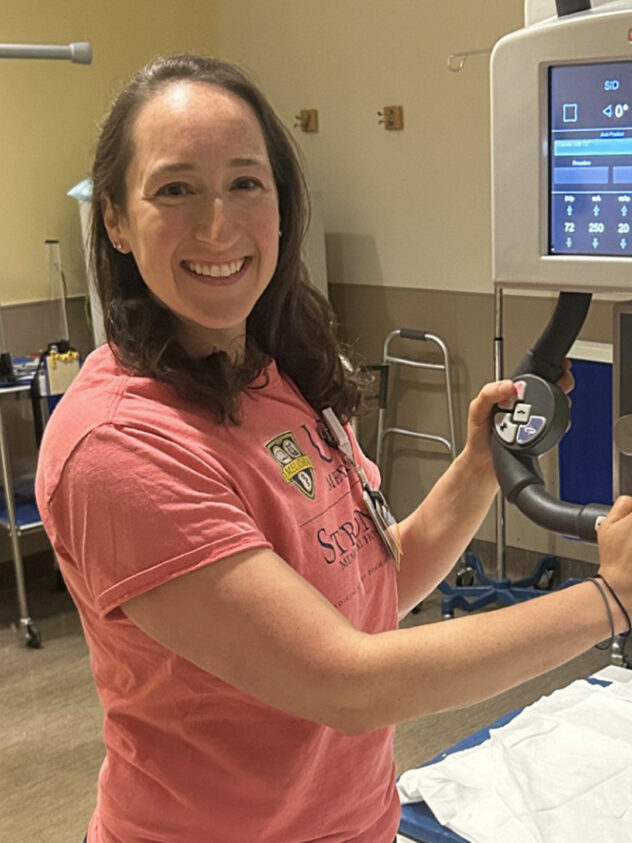
How long have you been working in this field, and what keeps you motivated/inspired?
I have been working in the X-ray field for eight years, since 2017. I stay motivated because every day in this field is something new and exciting. Whether I am traveling to patient rooms to take images of them, assisting surgeons during surgery, or helping inpatients with post-operative imaging, I am continuously learning new ways to improve my skills and increase my medical knowledge.
My job inspires me every day, seeing how we are a vital part of an intricate team that delivers life-saving care to so many people. The most rewarding part of my job is when I have a patient whom I have been x-raying for a period of time, and then learning that this patient is recovering and no longer needs us.
What advice would you give to someone considering a career as a rad tech?
Do it! Becoming a rad tech has been such a great decision for me. It has opened up so many doors and opportunities for a bright future for me and my family. The Imaging Sciences Department is so large and dispersed over all areas of the hospital and off-site locations. There are so many opportunities to grow and train in different imaging departments as well.
How do you help patients feel more comfortable during imaging procedures?
To make patients feel more comfortable, I try to understand their situation. I have a conversation with them and ask about their pain and what I can do to help make their imaging experience better. The hospital is such a fast-paced environment, but sometimes, all it takes is for someone to slow down and listen to their needs.
What do you think the public misunderstands about what rad techs do?
People might think our job is simple, but we need extensive training on the physics of the X-ray beam, the positioning of every body part, and training on how to care for patients in a hospital setting. Our patients in the hospital are really sick and injured. This changes the way we approach our exams. We have to think outside the box and come up with clever ways to obtain certain views if patients are unable to move.
How has UR supported your journey as a radiologic technologist, or how would you describe the support provided by leadership and your coworkers at URMC?
I always knew I wanted to help people when I grew up, but I didn’t exactly know how I was going to do that. After college, in 2012, I started working at the U of R Orthopedic building as an ambulatory technologist. I was putting on splints and casts for patients, but I desired to do more. The manager of the Orthopedic X-ray department encouraged me to shadow their team. I loved how the rad techs combined technology and their skills to provide high-quality X-rays for the doctors, and I was drawn to how vital their role was to patients. The U of R supported me through X-ray school with tuition assistance and by allowing me to work hours that wouldn’t interfere with classes and clinicals. Leadership in the Imaging Sciences Department supports me by providing an X-ray team that works seamlessly together. I am thankful that the U of R gives me flexibility to be a full-time radiologic technologist as well as a full-time mom.
Join our team! Explore boundless career and growth opportunities at the University of Rochester. Apply to be a radiologic technologist.
Did you know? Radiologic technologist is just one of the exciting roles open to current employees through the Career Pathways Program. Discover the benefits, eligibility details, and opportunities available to support your professional development.

